How to Barricade a Door that Opens Out
While there hasn’t been a lot of school shootings in 2020 (thanks to the pandemic), the number of school shootings has been steadily climbing since 2011. In 2019, this number reached a record of 111 incidents - more than any prior year.
More than ever before, we are hunting for solutions to prevent these shootings from occurring and ways to protect our families when they do.

In response to these tragedies, many began discussing the need for methods to secure classrooms from within that are easily accessible for teachers and school staff; and do not require expert knowledge to perform.

Should an active shooter situation occur, it is imperative to have systems and devices that can barricade a door. Barricading a door will keep the shooter at bay until authorities are able to neutralize the threat.
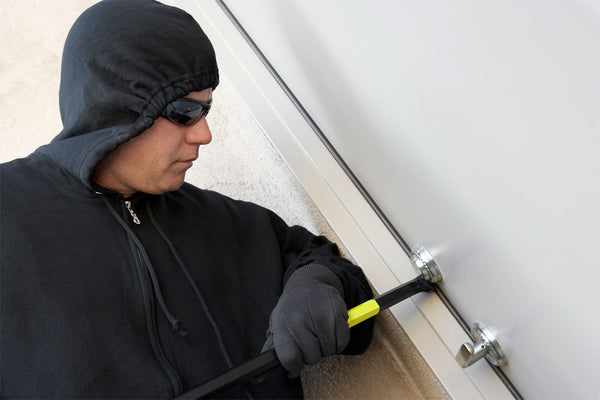
The question is how to barricade a door, and what are our options for school lockdown door locks and classroom door barricade devices?
In the past, barricading a door was done by fastening a belt over the door closer or by blocking the door with large objects, such as a bookshelf or desk.
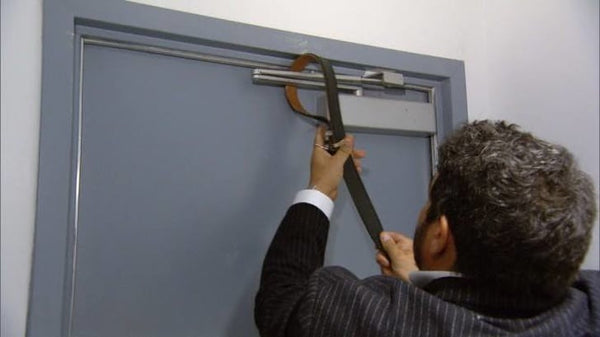
However, barricading a door these ways proves to be too complicated and time-consuming and are not always effective.
Because of this, many have sought to create specific lockdown devices for classrooms and offices.
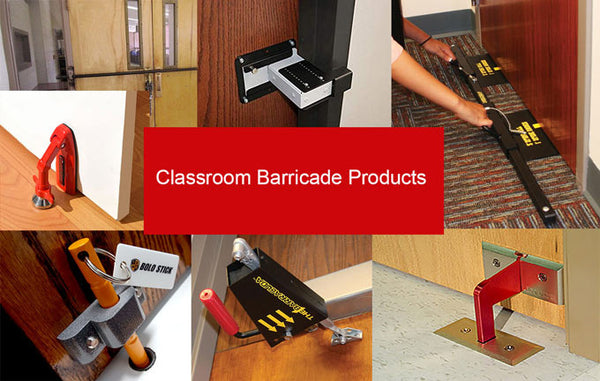
Currently, there are a lot of options for barricading a door. Simply googling "classroom barricade" yields staggering results, and can leave you feeling overwhelmed and unsure of the best classroom lockdown solution available for your school.
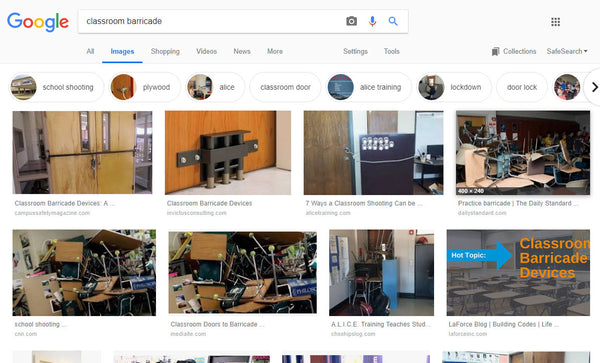
These barricades range from deadbolt style locks to attachments that remain permanently installed onto your door, to portable, freestanding devices. They are available in a variety of sizes, materials, and colors.
When trying to find the right barricade for your classroom, there are three primary questions to answer:
- Is the barricade easy and safe to use?
- Does it comply with the fire code?
- Is it durable enough to withstand an attempted entry?
The stress of an active shooter situation can make even the most basic of actions, such as turning a key or fastening a chain lock, almost impossible.
That’s why barricading a door should be simple and easy, requiring a single movement to put into place. Any barricade that requires the user to set two separate parts into place is too complicated and time-consuming to be considered safe.

A barricade should also never require its user to open the door to deploy it. It should be able to be fastened and removed from inside the classroom, and any barricade that calls for exiting the classroom is not safe to use.
Before using a barricade in your classroom, it is recommended that your local fire marshal approves your devices. Your barricade will have to comply with your state’s fire code.
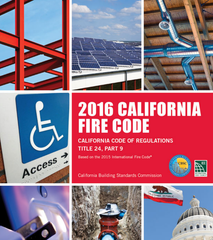
For example, most fire codes will prohibit the use of any device that secures a door from the inside that emergency responders are unable to disable from outside the door.
While this in effect makes nearly all barricades noncompliant with fire code, many fire marshals will make an exception by allowing these barricades to be used only when there is an active shooter situation.
The exemption can take different forms. The exemption method used by most states is a simple variance form issued by the state or local fire marshal.
Some states, however, have strict codes when it comes to modifying fire rated doors.
In California, Section 703 of their fire code states "fire door assemblies shall not be modified," prohibiting any additions to the door, frame, or hardware.
It is important to note that any modification made to areas of an existing structure bring significant consequences. Making any modifications to a fire-rated door will void the all-important fire warranty/guarantee. We were told that so much as a thumbtack being jammed into a door could void the fire warranty.

Drilling into the floor of any building, especially schools, can bring up many issues. Asbestos is always a concern when drilling into floor tiles. Even if tiles are asbestos-free, some adhesives used to adhere to flooring also may contain asbestos. Always consult your school or building’s asbestos log before any floor modifications.
Which means that a barricade that requires any permanent installation onto the classroom door stands the risk of being vetoed by a fire marshal, especially if it is rated as a fire barrier. It also becomes an insurance issue with the voiding of warranties.

Finally, your barricade needs to be durable. If a barricade is easy to use and complies with fire code but is not sturdy enough to keep a shooter out, it defeats the purpose of using a barricade.
Below is a brief overview of how to barricade a door using some of the leading classroom door lockdown devices available on the market for doors that open out.
HOW TO BARRICADE A DOOR METHOD #1: USE TEACHERLOCK1

The TeacherLock by Defcon Products is a bolting lock that you install directly onto your door. It comes with a key to lock from the inside (the TeacherLock Activator), with the option to add an emergency responder key for unlocking from the outside ($50).
It is designed to require little to no fine motor skills—use the activator to press the lock and the door is bolted shut. To exit, simply press the egress push button and the lock releases.
The TeacherLock has been deemed code compliant in jurisdictions all over the country including those who use IBC and NFPA 101.
While the deactivation of the product is a one-step process/motion (pushing the red button), this still does not open the door. A second step of needing to push down or turn the door handle to open and egress is needed.
The installation of TeacherLock requires drilling and mounting directly to the door. Thus, incurring installation costs and is also a post-manufacturing addition.
Lastly, the TeacherLock is available from $219, making it one of the more costly barricades on the market. Purchasing the "outside" key so adults or emergency responders can unlock from the outside will cost an additional $50.
The Teacherlock can work for both an outward opening door and an inward opening door. However, for inward opening doors expect to pay an additional $20.
Bottom line: the TeacherLock is easy and safe to deploy, but is not cost-effective.
HOW TO BARRICADE A DOOR METHOD #2: USE BEARACADE LOCKDOWN RESPONSE SYSTEM2

The Bearacade Lockdown Response System, made by National School Control Systems, is a barricade that slides under the door and is held in place by a pin. It is durable, light, and easy to deploy.
The installation is relatively simple, requiring a single hole to be drilled into the floor for securing the pin. No permanent mounting is required, so it is more likely to be approved by a fire marshal.
The Bearacade is relatively affordable, costing $59 with quantity discounts available. Plus, it can be used for an inward opening door as well.
The two most significant concerns with the Bearacade Lockdown Response System is that it requires the teacher to open the door to put it in place, leaving the teacher and all occupying the classroom at risk. Despite taking only seconds to deploy, these seconds could be all an assailant needs to gain entry or fatally wound a teacher or students.
The other issue is that the installation requires drilling into the floor. This installation step requires a high level of precision to get the right fit.
Additionally, the Bearacade requires routine maintenance to ensure that the hole is not clogged with dirt, dust, and other debris that are routine elements in a classroom or building. If the hole is not clear, the pin will not drop properly.
Lastly, and most concerning, is that drilling into floors in schools and commercial buildings often brings up issues related to asbestos in the tile. Even if tiles are asbestos-free, some adhesives used to adhere the flooring contain asbestos. Always consult your school or building’s asbestos log before any floor modifications.
While being affordable, sturdy, and easy to use, the Bearacade Lockdown Response System is not a safe solution for your classroom.
HOW TO BARRICADE A DOOR METHOD #3: USE BARRACUDA DSO3

The Barracuda DSO from the BILCO Company is a bar-style door barricade that slides over your door handle and rests against the door jam. It is a free-standing device and requires no permanent installation. It comes in two sizes, one for 36" commercial doors, and the other for 40"- 42" doors.
The Barracuda DSO is lightweight and durable but is one of the larger barricades available.
While the Barracuda DSO is reasonably simple to deploy, it requires the user to simultaneously hold the bar in position and tighten its handle until snug. When under the intense pressure of an active shooter situation, teachers may find it more difficult to perform these simple tasks. Studies show that fine motor skills significantly deteriorate during stressful situations.

Also, you may not want to advertise that this product exists in your room, which makes finding a spot to store storing the Barracuda DSO difficult.
The Barracuda DSO is available for $175.95 at walmart.com, making it moderately expensive compared to other barricades.
So, while the Barracuda DSO is durable and requires no permanent installation, it is slightly more expensive and not the easiest barricade to deploy.
HOW TO BARRICADE A DOOR METHOD #4: USE BARRACUDA DCS-14
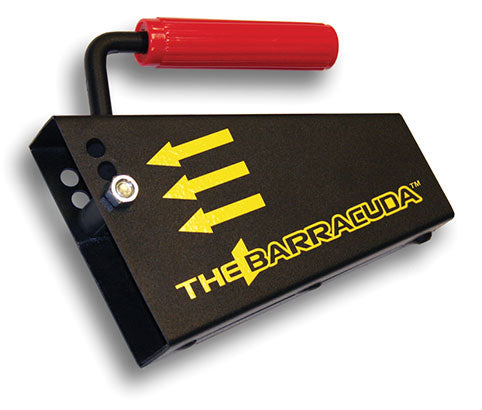
The Barracuda DCS-1 is another barricade available from BILCO. This barricade works for outward opening doors by sliding over the door closer, making the door immobile.
This design makes it simple, easy, and safe to deploy, requiring only seconds to put in place. It is adjustable, allowing you to secure three different sizes of door closers 2.5" 3" and 3.5")
At $70.95, the DCS-1 is one of the more affordable alternatives available. However, BILCO recommends the DCS-1 only to be used in conjunction with one of their other barricades (It explicitly says this in their instructions) such as the DSO, which brings your total to roughly $196 per classroom.
Also, the adjustable parts in the DCS-1 can be a cause for concern—if the bolts become loose, the structural integrity of the DCS-1 could be compromised.
However, most importantly is how few adjustment-sizes the device allows for. Research shows that there are TWELVE major door-closer sizes that exist in American schools. The DCS-1 only adjusts to one-quarter of those sizes.
Also, a "tight fit" on the door closer is the most important element in securing a door and keeping the door shut. Every quarter inch matters. Applying this product to a door closer that is even a quarter inch smaller than the product’s adjustment level can be the difference between securing a door properly and having the product shoot off the door closer in a time of need.
Minor factors such as standard quarter-inch rubber on the inside of the product and raised weld joints on the outside edge of the product also present possible issues with allowing the product to slide onto a door closer that is sucked up very tight to the door face. These gaps are typically very tight and every little obstruction like a raised weld joint could make it so the product is not able to be applied.
In short, the DCS-1 is affordable and easy to deploy but is recommended only to be used in addition to another barricade, making it a costly solution.
It has very few adjustment levels, rendering it useless on 75% of all door closer sizes commonly found in offices and schools. Its many exterior and interior design obstructions also make fitting it into the tight gaps that often exist on door closers very difficult.
Finally, the DCS-1 cannot work for an inward opening door.
If you are looking to buy a single barricade for your classrooms, this is not the barricade for you.
HOW TO BARRICADE A DOOR METHOD #5: USE NIGHTLOCK LOCKDOWN 1 AND LOCKDOWN 2 5

The NIGHTLOCK Lockdown 1 and Lockdown 2 function similarly. You mount the attachments to the bottom of the door, and they secure the door to the floor or doorframe.
The Lockdown 1 works by sliding the lock handle into the attachment on the door and floor, using the strength of the floor to keep the door secure. Similarly, the Lockdown 2 lock handle slides into the door attachment and wraps around the doorframe.
The lock handles are both small enough to store in a drawer and are easy to attach. The Lockdown 1 can be used for both metal and wood doors, while the Lockdown 2 is only available for wood doors.

The Lockdown 1 and Lockdown 2 can be purchased for $59.95 and 69.95 a unit, respectively, making them fairly inexpensive.
It should be noted that with both the Lockdown 1 and Lockdown 2 some precision is involved in deploying each barricade. While there are no fine motor skills required, the teacher will need to align the lock handle with the slot on the barricade to slide it into place.
This process takes both time and accuracy, both of which are in short supply during an active shooter situation.
Similar to the TeacherLock, with the Lockdown 1 and Lockdown 2 you run into the issue of making permanent alterations to the door, which may not be approved by your fire marshal. The door modifications are also post-manufacturing additions and may void the fire warranty of the door and door jam.
Another important factor is the installation up-front cost and time. Installation of the Nightlock Lockdown 1 and Lockdown 2 is at least a 20-step process per door according to their installation video. Some steps also have multiple tasks within them.
The other issue is that the installation requires drilling into the floor. This installation step requires a high level of precision to get the right fit.
Most concerning is that drilling into floors in schools and commercial buildings often brings up issues related to asbestos in the tile. Even if tiles are asbestos-free, some adhesives used to adhere the flooring contain asbestos. Always consult your school or building’s asbestos log before any floor modifications.
Therefore, while being affordable and sturdy, the precision and accuracy required to deploy the NIGHTLOCK Lockdown 1 and Lockdown 2, the significant installation labor and time, as well as the permanent alterations made to your door, make this a less practical solution.
How To Barricade A Door Method #6: Use the Sleeve2

Fighting Chance Solutions’ Sleeve2 is a similar concept to BILCO’s Barracuda DCS-1, with a more streamlined and practical approach.
Like the Barracuda DCS-1, it is a barricade that slides over the door closer but is built to withstand a classroom breach attempt, having been FEA tested to withstand over 550 pounds of force.
Since most classrooms have outward opening doors, this product will work perfectly.
The Sleeve2 is laser-cut from solid 12 gauge carbon steel. Rather than having moving parts for adjusting its size, it is made specifically to fit your door. With twelve different sizes to choose from, there should be no issues finding a model for your school.
To find the right Sleeve2 size for your door, simply measure the distance between the two door arms with a tape measure.

In the case that you have mismeasured your door arm, you can exchange your Sleeve2 for no extra cost.

Unlike the Barracuda DCS-1, the Sleeve2’s durable design allows it to be used on its own. You don’t need to buy any additional equipment to keep your classroom safe.
With the Sleeve2, your classroom is barricaded with one simple movement, which means no opening doors, no pressing locks or securing pins, no tightening or adjusting, and no fine motor skills required.
To use the Sleeve2, slide it over the door closer, and your door is secured. That’s it.
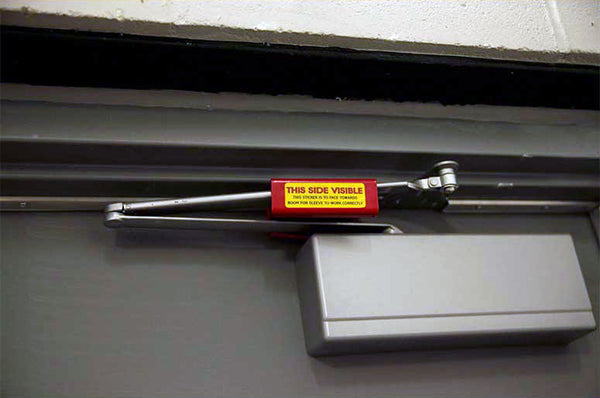
In light of BILCO discouraging the use of their Barracuda DCS-1 on its own, you may feel wary of using the Sleeve2 without an additional barricade; they are, after all, similar designs.
The Sleeve2 has not only been FEA tested but is also is the only active shooter door barricade on the market that has been put to the test in an actual shooting situation—and withstood an attempted door breach.

In 2016, during the UCLA shootings, members of the UCLA Department of Neurology used Fighting Chance Solutions’ Sleeve barricade to secure one of their lab buildings.
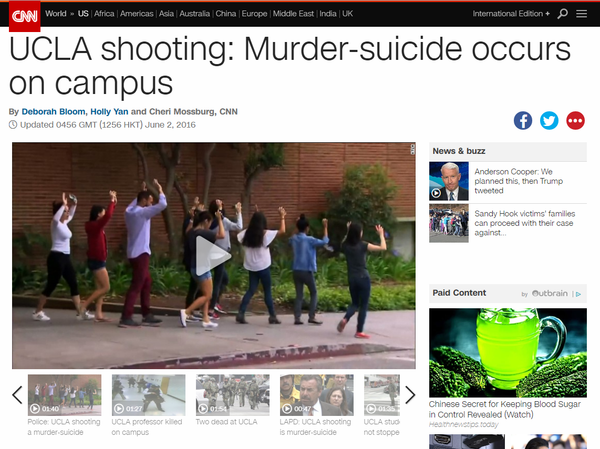
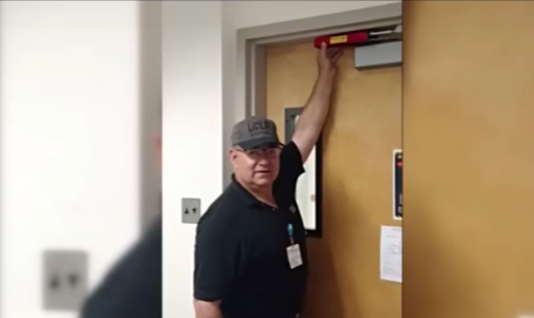 During the shootings, another of the department’s employees attempted to enter the barricaded building. However, despite numerous attempts to open the door, the Sleeve did what it was designed to do—it kept the door locked and in place.
During the shootings, another of the department’s employees attempted to enter the barricaded building. However, despite numerous attempts to open the door, the Sleeve did what it was designed to do—it kept the door locked and in place.
So, the Sleeve2 is quick, easy, and safe to deploy, and is durable enough to withstand an attempted entry.
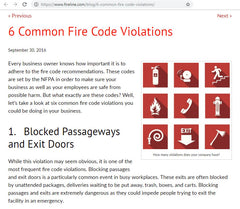
Does it stand up to fire code?
Because the Sleeve2 requires no additional installation or permanent alterations to your door, its frame, or the floor, it is more likely to comply with your state fire code and be approved by a fire marshal. Fire Marshals across the US have issued variance forms with the reassurance the product is only deployed during training or actual active shooter events.
In fact, the Sleeve2 is already being used in schools and commercial buildings in all 50 states.
Is it easy to store?
This is where the product being engineered by educators shines through. The Sleeve2’s compact design allows you to keep it wherever is convenient for you. The Sleeve2 is commonly stored by the door, in a nearby drawer of a cabinet, in your purse, or in your work bag.
Besides, each Sleeve2 comes with a hanger and mounting hardware if you wish to store it on your classroom or office’s wall.
Is it a cost-effective lockdown solution for your school?
Fighting Chance Solutions offers the Sleeve2 for $83.00 per unit. The Sleeve2 is also available with bulk discounts for organizations purchasing larger quantities.
The available discounts make Sleeve2 one of the most affordable solutions available on the market.
Schools around the nation are realizing that classroom lockdown solutions are no longer an optional extra safety measure. We are in dire need of reliable tools that protect and defend those who are unable to defend themselves.
A classroom door barricade is becoming as essential as a first aid kit or fire extinguisher.
It provides not only protection and security in times of need, but also peace of mind in your day to day life.
You can feel confident and at ease, knowing that you are equipped to keep your loved ones safe.
The barricade you choose, then, must be simple and quick to deploy and keep your classroom secure if put to the test.
A barricade that is complicated and time-consuming to deploy only robs you of that peace of mind. Your energies are spent needlessly trying to ensure you have performed each step to set up your barricade perfectly.
And if you cannot be confident that your barricade is durable enough to keep an assailant from forcing the door open, it will only be a source of worry rather than security.
The Sleeve2 was created with all of this in mind.
With Fighting Chance Solutions’ Sleeve2 door barricade, there is no need to be concerned about whether or not your teachers will be able to deploy the barricade in a short amount of time effectively.
Its straightforward design removes the confusion involved with setting up a multi-step barricade system. And if need be, it can be removed as quickly and easily as it is deployed.
Most importantly, you can rest easy knowing that the Sleeve has already withstood the ultimate test and prevailed.
click here to purchase the Sleeve2.
For questions regarding fire code, sizing, or anything else regarding the Sleeve2 or Fighting Chance Solutions, see our Frequently Asked Questions section at the bottom of the Sleeve2 product page.

For any other questions, feel free to contact us by phone at (888) 559-6412, or by emailing us at information@fightingchancesolutions.com.


